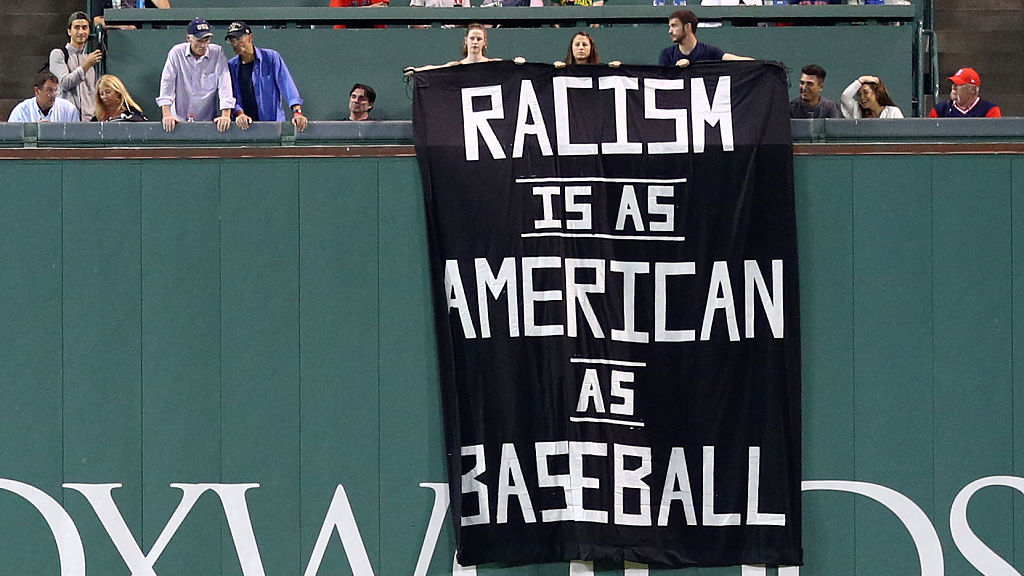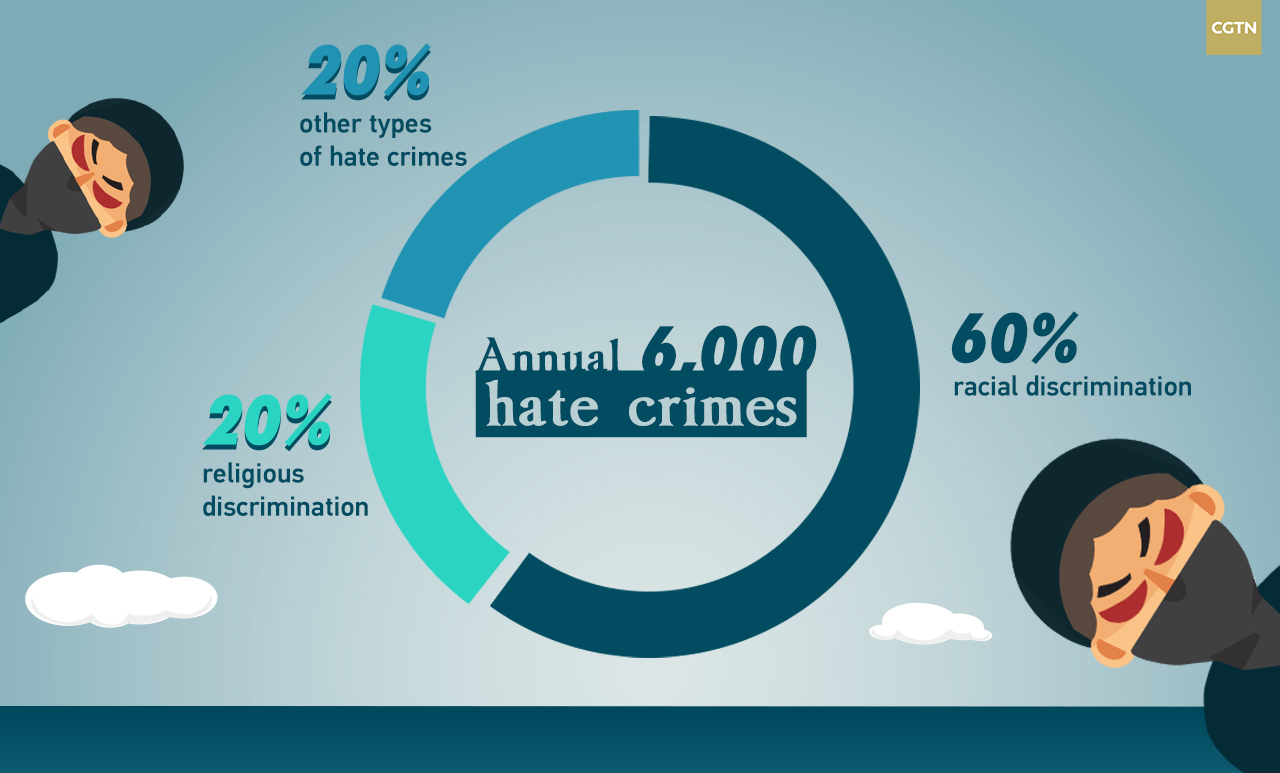

Editor's note: The China Society for Human Rights Studies released a report titled "The Deep-Rooted Racial Discrimination in the U.S. Highlights Its Hypocrisy on Human Rights" on July 26 that reveals chronic racial discrimination in the United States and the hypocrisy of the U.S.-style human rights. The report also points out that it is difficult for the U.S. to solve this problem. The following article is part three of an edited version of the report focusing on the social impact of racial problems in the U.S. The article does not necessarily reflect the views of CGTN.
Racial discrimination has a detrimental effect on U.S. society. It has led to worsening race relations, growing hate crimes, and increasing societal breakdown.
Worsening race relations
A survey by the Pew Research Center on current U.S. race relations revealed that 45 percent of respondents thought that the U.S. had made progress in racial equality. Statistics released by the Pew Research Center in August 2015 showed that 50 percent of Americans thought that racism was a serious social problem in the U.S., and 60 percent – 14 percentage points higher than the previous year – thought that the government should make more effort to promote racial equality.
A National Broadcasting Company (NBC) poll in 2016 found 77 percent of the U.S. public confirming the existence of racial discrimination against African-Americans, and 52 percent of them calling it a very serious problem. Pewresearch.org reported on February 22, 2018, that in 2017, about eight in ten African Americans (81 percent) said racism is a big problem in society today, an increase of 37 percentage points compared with 2009.
NBC News reported on May 29, 2018, that a poll shows that 64 percent of its respondents said racism remains a major problem in American society, 45 percent believed race relations in the U.S. are getting worse, and 30 percent thought race is the biggest source of division in America today.
Growing racial hate crimes
The number of racial hate groups keeps growing. According to the Southern Poverty Law Center, there were 457 hate groups in the US in 1999, 602 in 2000, and 1,000 by 2010. Among these were the Ku Klux Klan, neo-Nazis, skinheads, and anti-Muslim groups. Their members were present at the white-supremacist demonstrations in Charlottesville, Virginia in 2017.
The number of racial hate crimes remains high. Based on the FBI's yearly statistics from 2010 to 2015, the number of hate crimes involving discrimination is staggering, as demonstrated below.

Source: Federal Bureau of Investigation. Graph is made by Yin Yating.
Latimes.com reported on November 13, 2018, that according to a report released by the FBI, hate crimes in the U.S. rose by more than 17 percent in 2017 – the biggest annual increase since 2001. Among the documented hate crimes in 2017, about 60 percent were motivated by racial discrimination and close to 50 percent of victims were African Americans.
Increasing societal breakdown
There are widely disparate views on racial discrimination in U.S. society. A PRRI study in 2016 showed that 64 percent of African-Americans complained about police abuse of power in their communities, while only 17 percent of the white respondents shared this view – the former figure is nearly four times the latter.
About 83 percent of white people had confidence in law enforcement by police, while only 48 percent of African-Americans held such views. White people and African-Americans held completely different views toward police killing of African-Americans. About 65 percent of white people and 15 percent of African-Americans thought such incidents were unrelated individual cases, but as many as 81 percent of African-Americans believed that such incidents were frequent in the U.S.
Read other parts of the report "The Deep-Rooted Racial Discrimination in the U.S. Highlights Its Hypocrisy on Human Rights":
Part One: Racial discrimination rife in the U.S.
Part Two: Racial discrimination widespread and deep-rooted in the U.S.
Part Four: Racial problems in the U.S. – a structural obstacle hard to overcome
Editor: Huang Jiyuan
Graphic Designer: Yin Yating
(If you want to contribute and have specific expertise, please contact us at opinions@cgtn.com.)

Copyright © 2018 CGTN. Beijing ICP prepared NO.16065310-3
Copyright © 2018 CGTN. Beijing ICP prepared NO.16065310-3